Paintings created by He Xiangning (1878-1972) and Chen Shuren (1884-1948) are on display at two exhibitions at the He Xiangning Art Museum. One focuses on the landscape paintings of the two masters, while another features Chen's flower-and-bird paintings, landscapes, figure paintings, and calligraphy.
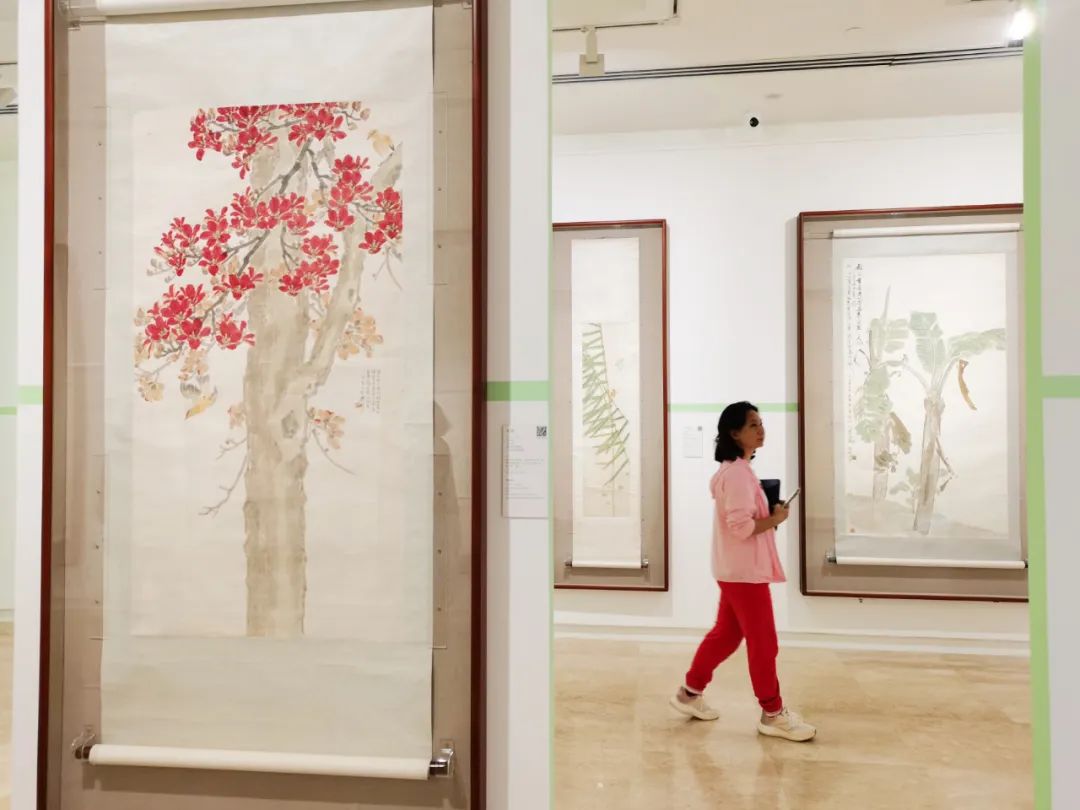
A visitor walks past paintings created by Chen Shuren at He Xiangning Art Museum. Photos by Cao Zhen unless otherwise stated
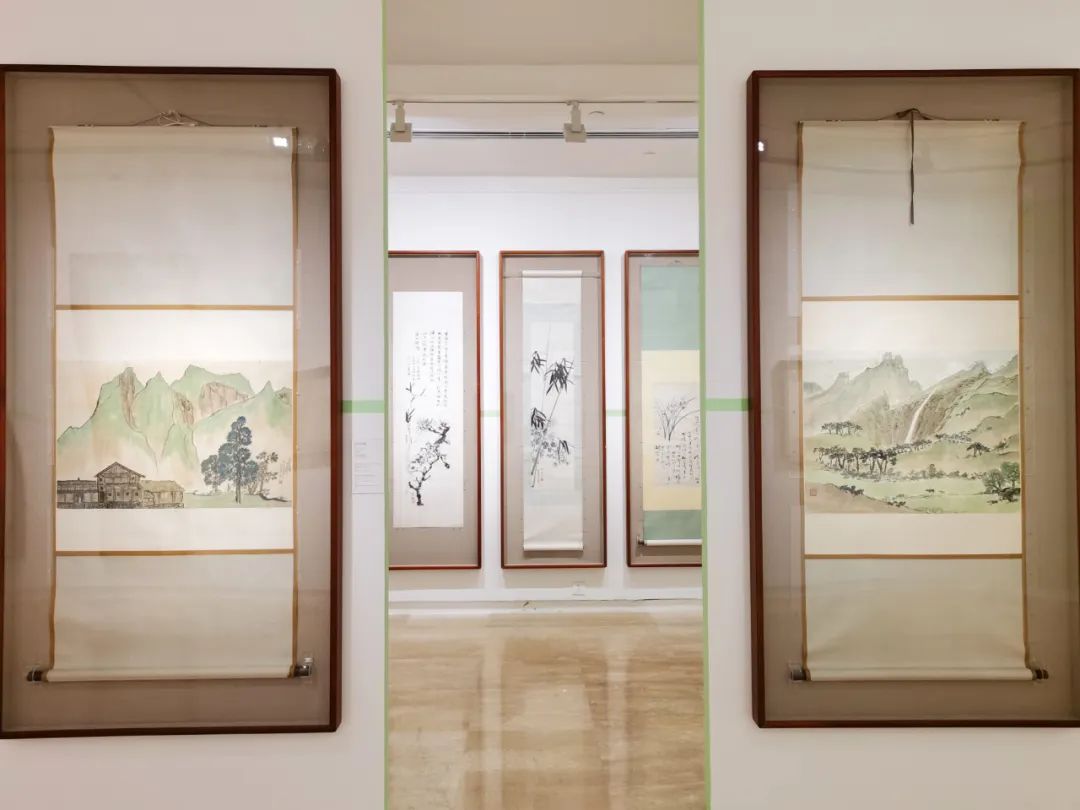
Paintings created by Chen Shuren are on display.
"These exhibitions not only revisit the artistic careers of the two masters but also reflect the ‘new landscape painting' and the innovative spirit of Lingnan art," said Cai Xianliang, director of the He Xiangning Art Museum.
"He Xiangning's landscape paintings are grand and powerful, whereas Chen Shuren's are fresh and elegant. Both artists integrated narratives of homeland and reflections of their era into traditional brush and ink techniques, offering vital inspiration for the modern transformation of Chinese painting," Cai added.
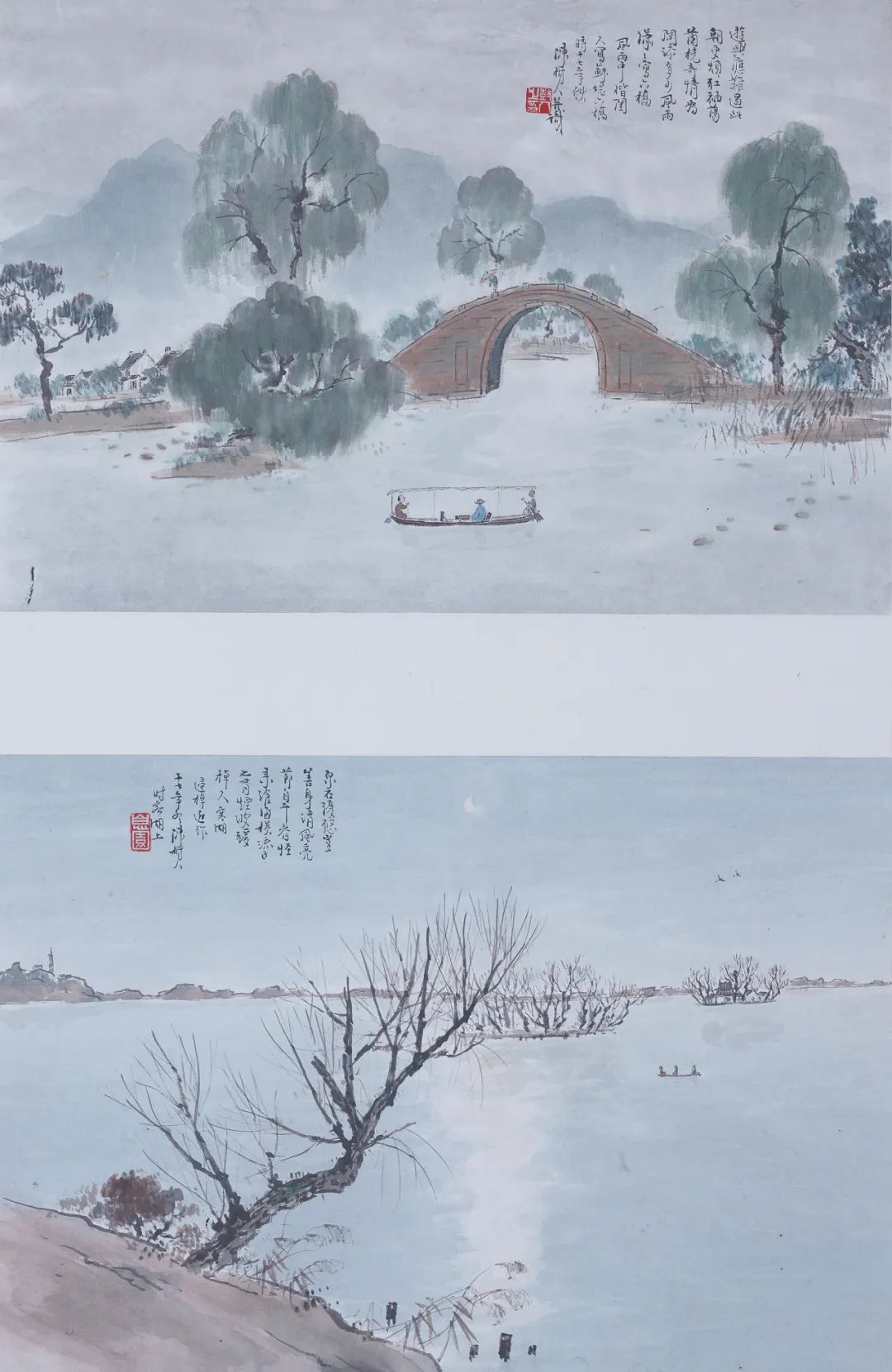
Paintings created by Chen Shuren in 1928. Image courtesy of the exhibition organizers
"The majestic power of He Xiangning's works and the refined elegance of Chen Shuren's outline the diverse features of Lingnan art. We can sense the innovative energy in the works of these two masters. Chen, a founder of the Lingnan school, and He, a prominent 20th-century artist, inspire us to reflect on the relationship between art and individuals," said Li Lina, deputy director of Guangzhou Museum of Art, a collaborating institution for the exhibitions.
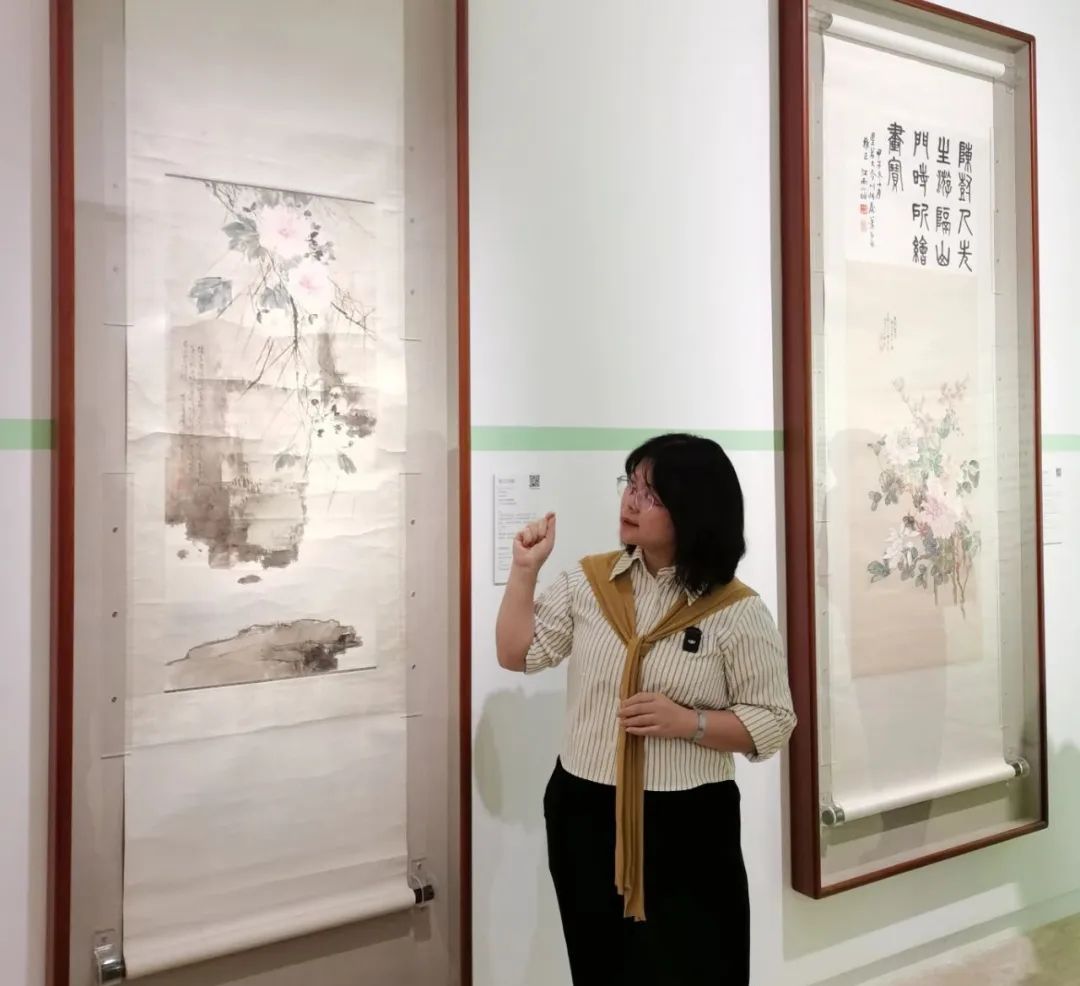
Li Lina introduces Chen Shuren's paintings at the exhibition.
"Both He Xiangning and Chen Shuren received formal artistic training in Japan in the early 1900s, where they were influenced by the fusion of Japanese and Western art traditions. By examining the landscape works of these two masters, we can trace their innovations in style and theme within the landscape genre," said curator Yi Donghua.
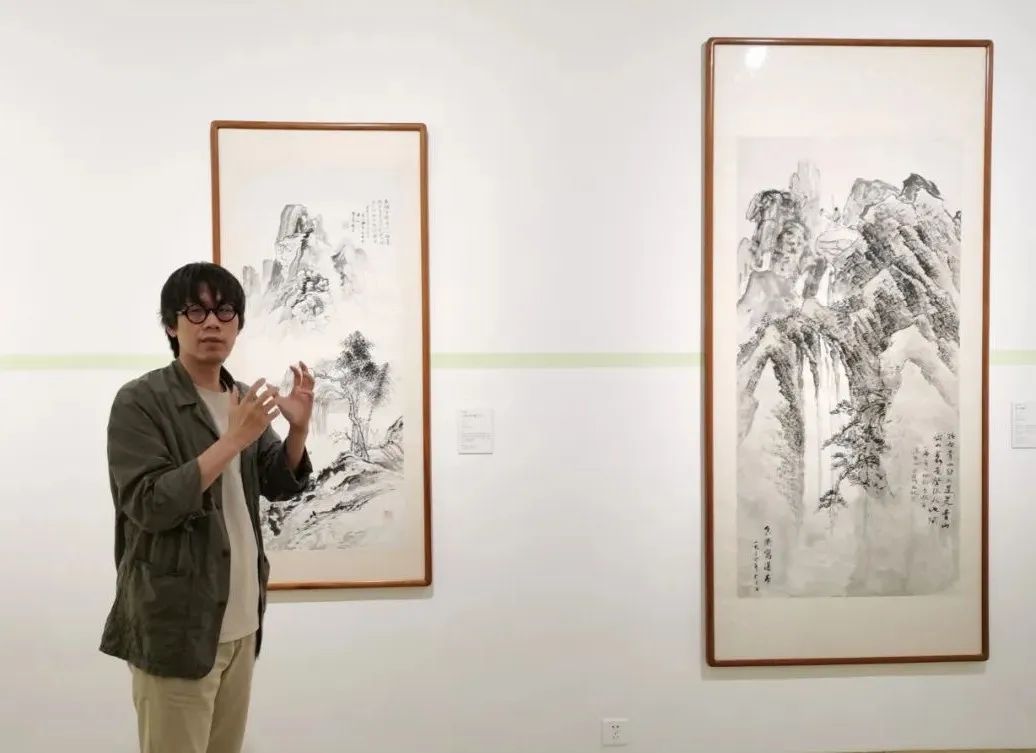
Yi Donghua introduces paintings created by He Xiangning.
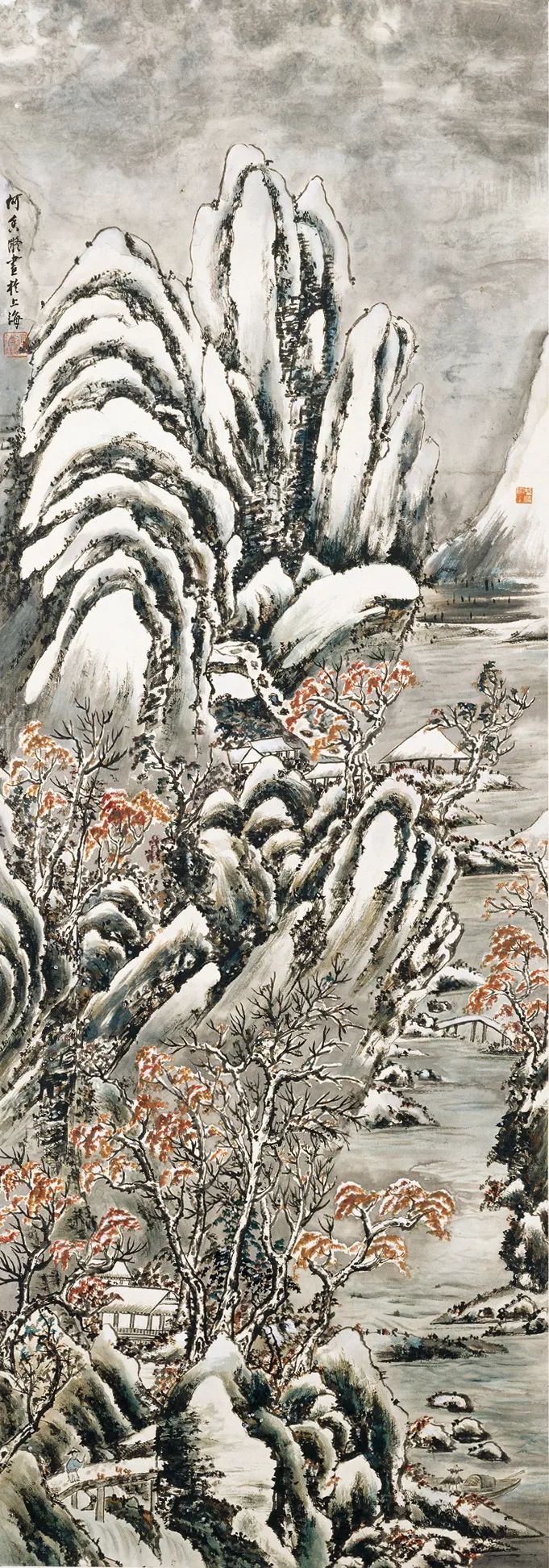
A painting created by He Xiangning in the 1930s. Image courtesy of He Xiangning Art Museum
"Both artists were also visionary intellectuals engaged in social activities, embedding their work within the context of ‘revolution' — a term encompassing political transformation as well as aesthetic rebellion," Yi added.
"Their distinct artistic styles reflect different interpretations of the ‘new landscape painting,' which combined classical conventions with naturalistic observation and Western-inspired effects of light. Their landscapes convey metaphors of reclusion, wandering, homeland nostalgia, and national consciousness," said Yi.
Dates: Through July 13
Hours: 9:30 a.m.-5 p.m., closed Mondays
Tickets: Free, no reservations necessary
Venue: He Xiangning Art Museum, Nanshan District (何香凝美术馆)
Metro: Line 1 to OCT Station (华侨城站), Exit C
















